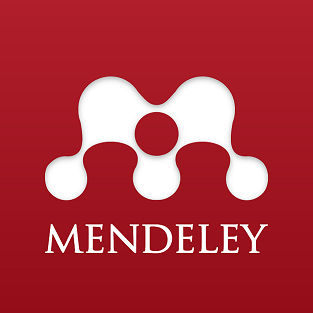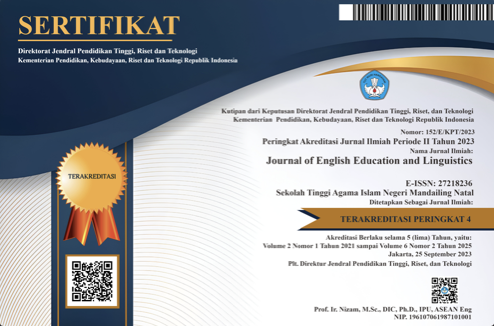The Interface of English Language Teaching and Remote Educational Technology
DOI:
https://doi.org/10.56874/jeel.v1i1.61Keywords:
Educational Technology, English Language Teaching, InterfaceAbstract
Adapting to the “New Normal” is the prime issue that educational institutions are facing nowadays, thus, adjustments in teaching and learning has to be done to reach all students despite the limitations in the face to face interaction. This paper has been initiated to share the voices of the teachers and students’ circumstances and struggles in the transition due to COVID-19 pandemic. Through this paper, the perception on the psychological, and pedagogical concerns shall be given overview and the interface of English Language Teaching and Remote Educational Technology shall be given light to provide beneficial concept for both teachers and students This shall pave way for the continuous support and development in educational institutions and fronliners
References
Arthur-Nyarko, E., & Kariuki, M. G., (2019). Learner access to resources for eLearning and preference for eLearning delivery mode in distance education programmes in Ghana. International Journal of Educational Technology, 6(2), 1-8
Denise Whitelock, Eric Ras, Nicola Capuano, Maria Jesus Marco Galindo and David Baneres Retrieved from https://www.springeropen.com/collections/tellet
Eyyam, Ramadan & Yaratan, Hüseyin. (2010). The effects of technology use on students’ success in English lessons.
Gomez, Carla (2014), Role of Eeductaional Technology in 21st century, retrieved from https://www.slideshare.net/cute_carlagomez/role-of-educational-technology-in-the-21st- century
Jaypee Borja, RN retrieved from https://www.slideshare.net/cute_carlagomez/role-of- educational-technology-in-the-21st-century
Jonassen. (1990) retrieved from https://www.researchgate.net/publication/220374356_Translating_Constructivism_into_I nstructional_Design_Potential_and_Limitations
Joice Waddell, retrieved from https://education.msu.edu/green-and-write/2015/the-role-of- technology-in-the-educational-process/
Kurt, S. Educational Technology: An Overview, in Educational Technology, Retrieved from https://educationaltechnology.net/educational-tecnology-an-overview/
Meayer, R. E. (2014). Multimedia instruction. In Handbook of research on educational communication and technology, (p. 385-399). New York: Springer.
Platt, C. A., Raile, A. N., & Yu, N. (2014). Virtually the same? Student perceptions of the equivalence of online classes to face-to-face classes. Journal of Online Learning &
Teaching, 10(3), 489–503
Russel, J., & Sorge, D. (1999). Training facilitators to enhance technology integration. Journal of
Instruction Delivery Systens, 13(4), 6.
Schacter, J., & Fagnano, C. (1999). Does technology improve student learning and achievement? How, when, and under what conditions. Journal of Educational Computing Research, 20(4), 329-343.
UNESCO. (2020, March 5). Distance learning solutions. UNESCO. https://en.unesco.org/covid19/educationresponse/solutions
Downloads
Published
Issue
Section
License
All articles published in the Journal of English Education and Linguistics are licensed under a Creative Commons Attribution-ShareAlike 4.0 International (CC BY-SA) license. This means anyone is free to copy, transform, or redistribute articles for any lawful purpose in any medium, provided they give appropriate attribution to the original author(s) and Journal of English Education and Linguistics, link to the license, indicate if changes were made, and redistribute any derivative work under the same license.
Copyright on articles is retained by the respective author(s) without restrictions. A non-exclusive license is granted to the Journal of English Education and Linguistics to publish the article and identify itself as its original publisher, along with the commercial right to include the article in a hardcopy issue for sale to libraries and individuals.
Although the conditions of the Creative Commons Attribution-ShareAlike 4.0 International (CC BY-SA) license do not apply to authors (as the copyright holder of your article, you have no restrictions on your rights), by submitting to the Journal of English Education and Linguistics, authors recognize the rights of readers and must grant any third party the right to use their articles to the extent provided by the license.

This work is licensed under a Creative Commons Attribution-ShareAlike 4.0 International License.








